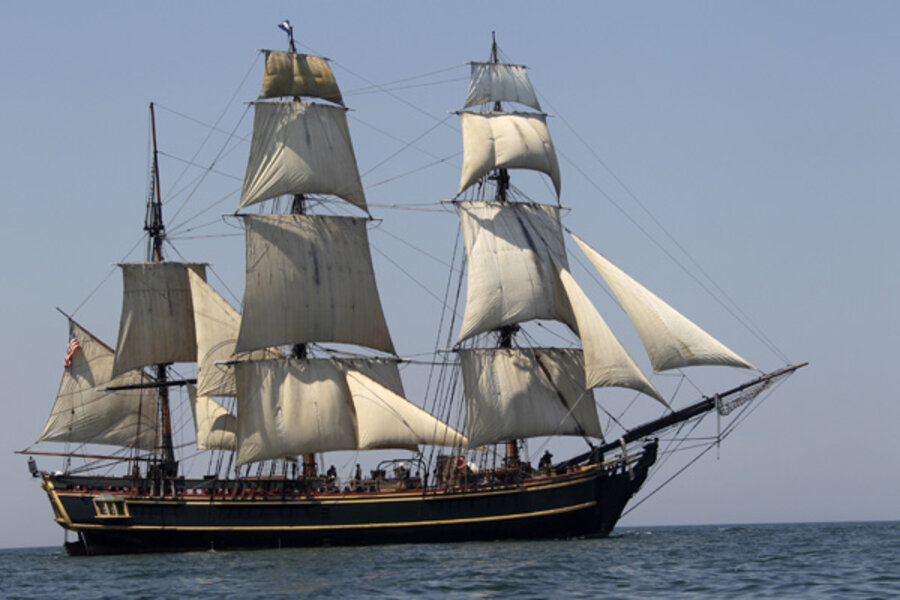The story behind the HMS Bounty, sunk by Sandy off N.C. coast
Loading...
| Washington
Hurricane Sandy has already claimed a well-known victim, as the massive storm has sunk the tall ship HMS Bounty off the coast of North Carolina.
Two US Coast Guard helicopters rescued 14 of the ship’s 16 crew members early Monday morning. The Coast Guard is still searching for the two missing crew, a service spokesman said.
The ship issued a distress call at 6:30, Eastern time, on Sunday evening, according to the website of the HMS Bounty Organization. At that time it lost power, and pumps were thus unable to keep up with water rising in the ship. The vessel was taking on two feet of water per hour, according to the Associated Press.
Bounty Organization officials contacted the Coast Guard, which sent a C-130 aircraft to track the distressed vessel at its location, approximately 90 miles southeast of Cape Hatteras, N.C. By 4:30 a.m., the situation was so bad that the captain ordered the ship abandoned, according to the website. The Coast Guard says its helicopters pulled 14 survivors from lifeboats by 6:30 a.m. Monday.
In 1789, the original HMS Bounty played a role in the one of the most famous stories in maritime history. A small three-masted sailing vessel sent by Britain’s Royal Navy to the Pacific on a supply expedition, the Bounty was roiled by tension between its crew and Capt. William Bligh.
After landing in Tahiti and taking on a cargo of breadfruit, the Bounty set sail for the West Indies. It never reached that destination. Instead, mate Fletcher Christian led the men in a mutiny against what history has long portrayed as the abuses of Bligh. Bligh and his loyalists were allowed to sail off in a longboat. They reached safety at the Dutch-owned port of Kupang after an arduous journey.
Christian and his followers ended up on Pitcairn Island. They burned the Bounty there and settled on the island with the ship’s livestock, other provisions, and some Tahitian natives.
Passing ships did not discover the enclave until after the turn of the century. At that time only one of the mutineers, and a number of Tahitian women, remained alive.
The ship that sank Monday was a replica of the original Bounty, built for the 1962 “Mutiny on the Bounty” movie, which starred Marlon Brando as Christian. It was constructed from original Royal Navy plans, but was made one-third larger to accommodate cameras and other filming equipment.
Over the years it has starred in a number of sailing movies, including the “Pirates of the Caribbean” film series, in which it was the pirate ship Black Pearl.
Tracie Simonin, director of the HMS Bounty Organization, said that the ship left Connecticut last week bound for Florida and was in contact with the National Hurricane Center as it tried to skirt the massive storm barreling up the East Coast.








